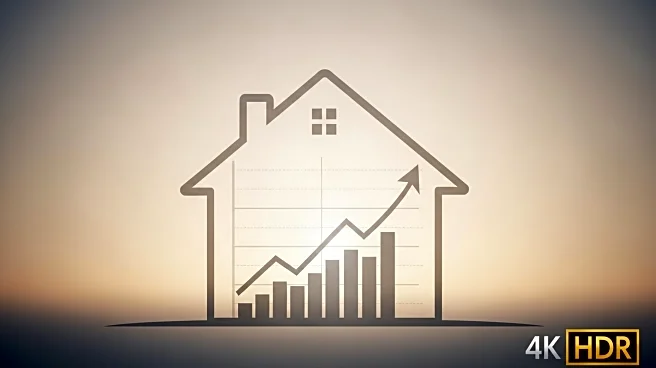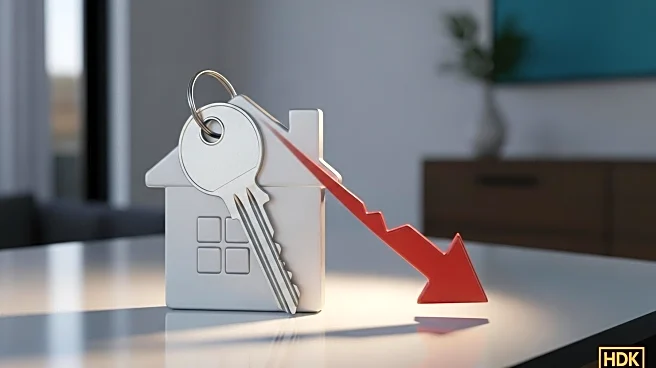What's Happening?
Mortgage rates have experienced their largest weekly drop in a year, with the average rate for a 30-year fixed mortgage falling to 6.35%, according to Freddie Mac. This decrease from 6.5% has spurred a surge in mortgage applications, both for home purchases and refinancing. The Mortgage Bankers Association reports that refinance applications now constitute nearly half of all mortgage applications, as homeowners seek to lower monthly payments. The drop in rates is attributed to lower Treasury yields, influenced by recent labor market data showing weakened job growth.
Why It's Important?
The decline in mortgage rates is significant for the U.S. housing market, potentially revitalizing home buying and refinancing activities. Lower rates can make homeownership more accessible, encouraging first-time buyers and stimulating economic activity in related sectors such as construction and real estate. The increased demand for refinancing also suggests homeowners are eager to capitalize on lower rates to reduce financial burdens. This trend may contribute to stabilizing the housing market, which has faced challenges due to high interest rates and economic uncertainty.
What's Next?
As mortgage rates continue to fluctuate, potential homebuyers and current homeowners may closely monitor economic indicators and labor market trends that influence rate changes. The housing market could see increased competition among buyers, leading to potential price adjustments. Stakeholders, including real estate agents and financial institutions, may adapt strategies to accommodate shifting consumer demand and capitalize on the renewed interest in homeownership.











